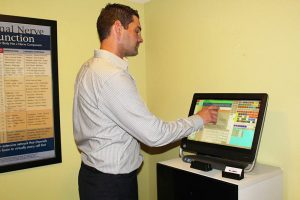Many people are diagnosed with Carpal Tunnel Syndrome (CTS) each year and experience symptoms like tingling, numbness, burning and pain in parts of the hands and wrists, or even an inability to grasp properly. Carpal tunnel release is one of the most common surgeries performed in the United States, but new findings report that nearly half of these surgeries are unsuccessful in relieving symptoms. Learn more about this commonly diagnosed syndrome and what you can do if you’re exhibiting symptoms of CTS.
What is CTS?
Your carpal tunnel is a narrow passageway located in the wrist. This “tunnel” allows for the median nerve, which extends from the spine to the hand, to pass through. Any swelling of the carpal tunnel can cause compression on the median nerve, resulting in Carpal Tunnel Syndrome and potentially cutting off or limiting feeling and movement to portions of the hand. Women are twice as prone to developing the condition as men. Experts are unsure why women are more likely to get CTS, but it’s suspected that it may be due to the smaller size of most women’s carpal tunnel.
Diagnostic Issues
Carpal Tunnel Syndrome cases can be complicated because it’s often impossible to pinpoint the exact cause. There is research indicating that some cases of CTS may be caused by repetitive motion, like construction work, factory work or typing. Evidence suggests that genetics could play a role as well. “Some people have a predisposition because their carpal tunnel is just smaller than average,” Dr. Michael Robertson, D.C. and Chiropractic Director of Chiro One Wellness Centers of Las Colinas, Texas, explains.
More importantly, CTS can be difficult to diagnosis and many patients have been misdiagnosed with CTS when they are suffering from another condition that exhibits similar symptoms, such as arthritis, subluxations or disc degeneration in the cervical spine that can cause irritation of the median nerve.
Despite these issues with diagnosis, invasive treatments like injected steroids and surgery are currently the major treatment options considered for the painful condition. And according to a study published by the Journal of Clinical Engineering, nearly half of the surgical treatments for CTS are unsuccessful, indicating that many patients are misdiagnosed.
Chiropractic Treatment of CTS
Chiro One strongly recommends seeking out non-invasive treatments first if you suspect CTS. Though the healing power of chiropractic is often overlooked, organizations such as the National Institute of Neurological Disorders and the University of Maryland Medical Center list chiropractic as an alternative treatment for CTS.
“Your chiropractor will investigate the entire path of the median nerve, which originates in your cervical spine,” says Dr. Mike. “This can be key to diagnosing and treating Carpal Tunnel Syndrome because research demonstrates that any nerve compression along the path of the median nerve can contribute to or cause symptoms.”
Left untreated, the syndrome can cause permanent damage to the hand or thumb. If you think you may have Carpal Tunnel Syndrome, a quick consultation with a chiropractor can kick-start the healing process and potentially prevent an unnecessary surgery.


 At Jones Family Chiropractic we offer in-house x-rays as a convenience to our patients so they don’t have to be referred out to another location.
At Jones Family Chiropractic we offer in-house x-rays as a convenience to our patients so they don’t have to be referred out to another location. Jones Family Chiropractic utilizes a state of the art software system that assists with all aspects of chiropractic care. Analysis, results, treatment schedules and progress are all kept in our system. Each time you visit us your private and secure patient history is available for you and Dr. Jones to review and discuss.
Jones Family Chiropractic utilizes a state of the art software system that assists with all aspects of chiropractic care. Analysis, results, treatment schedules and progress are all kept in our system. Each time you visit us your private and secure patient history is available for you and Dr. Jones to review and discuss. Complimentary 15 Minute Consultation*
Complimentary 15 Minute Consultation*